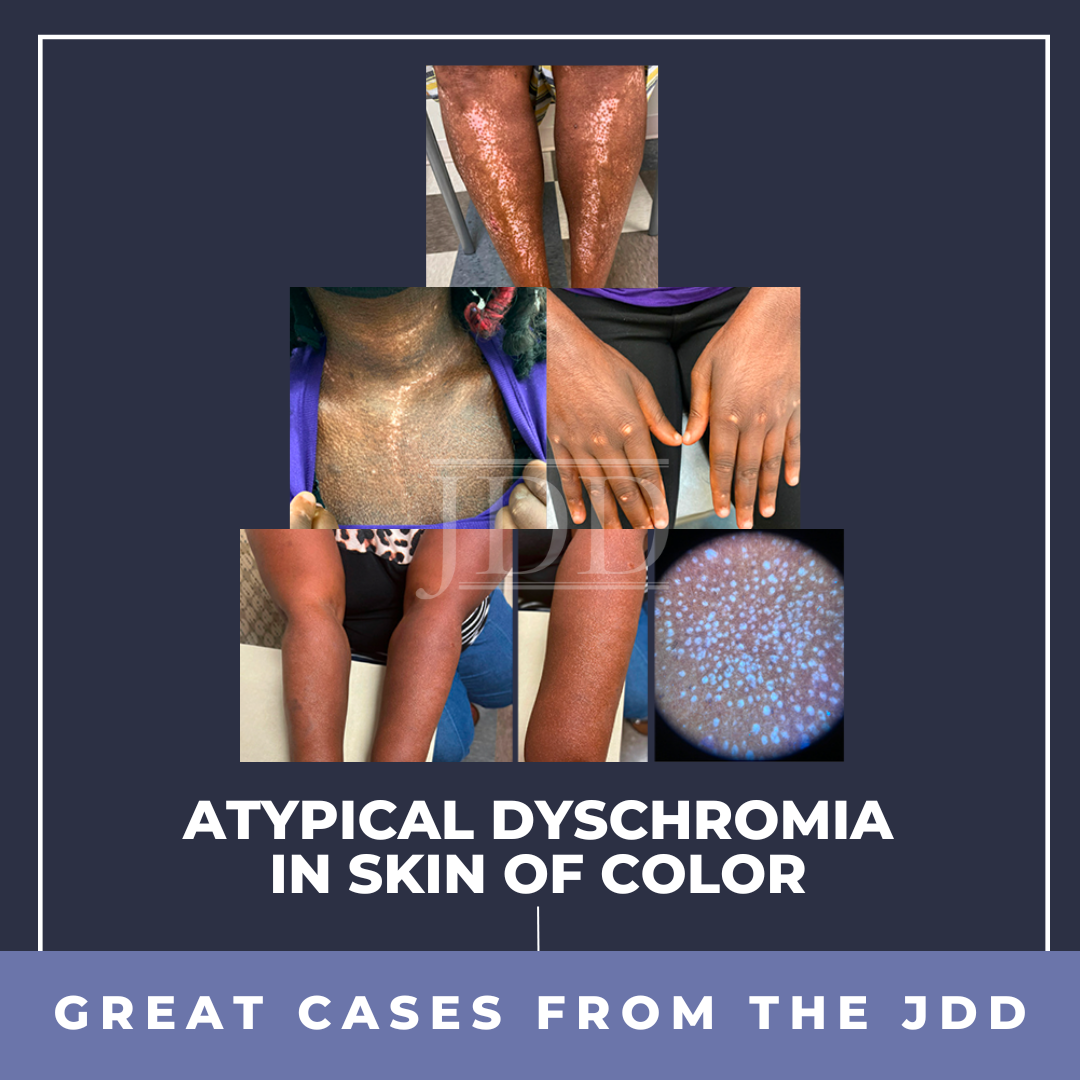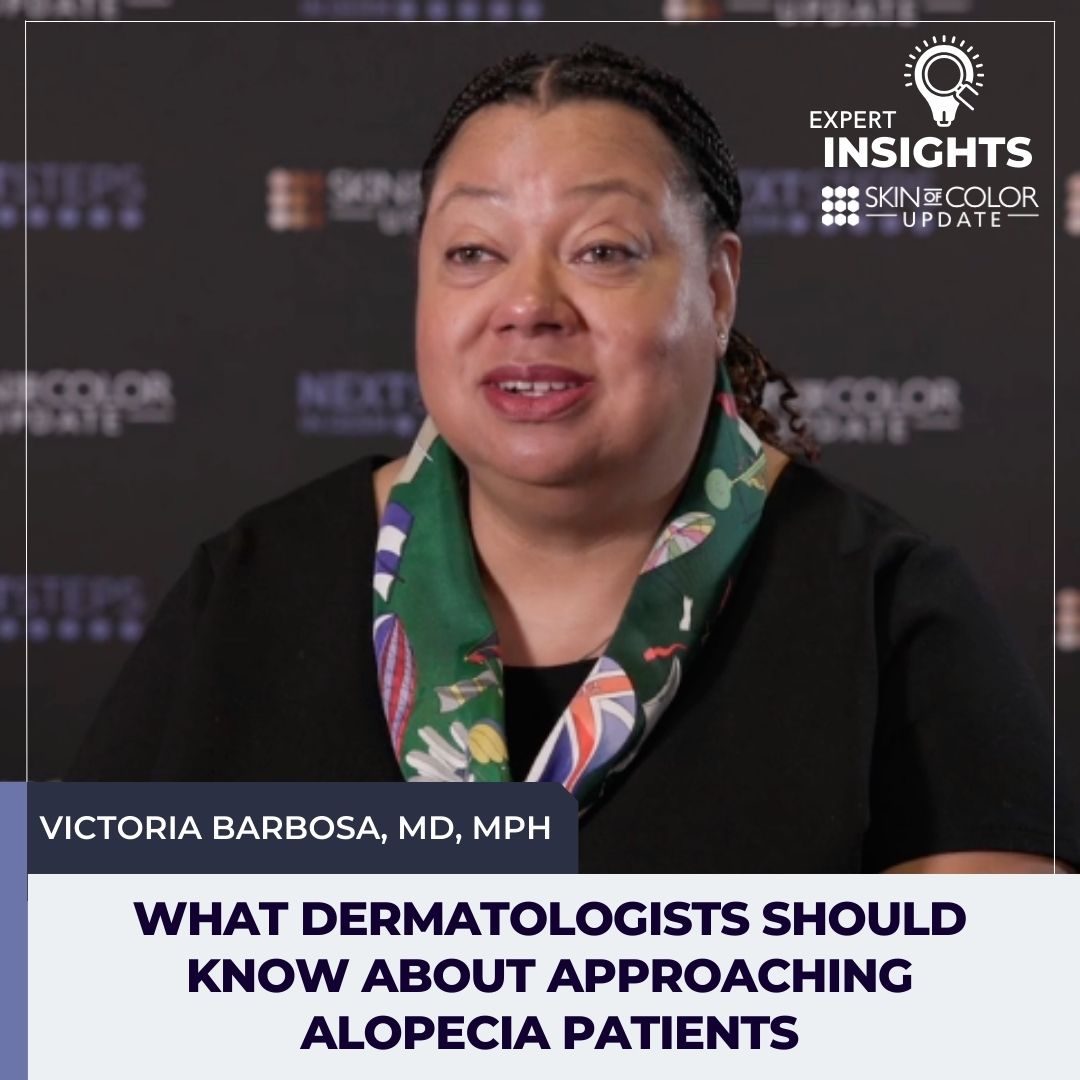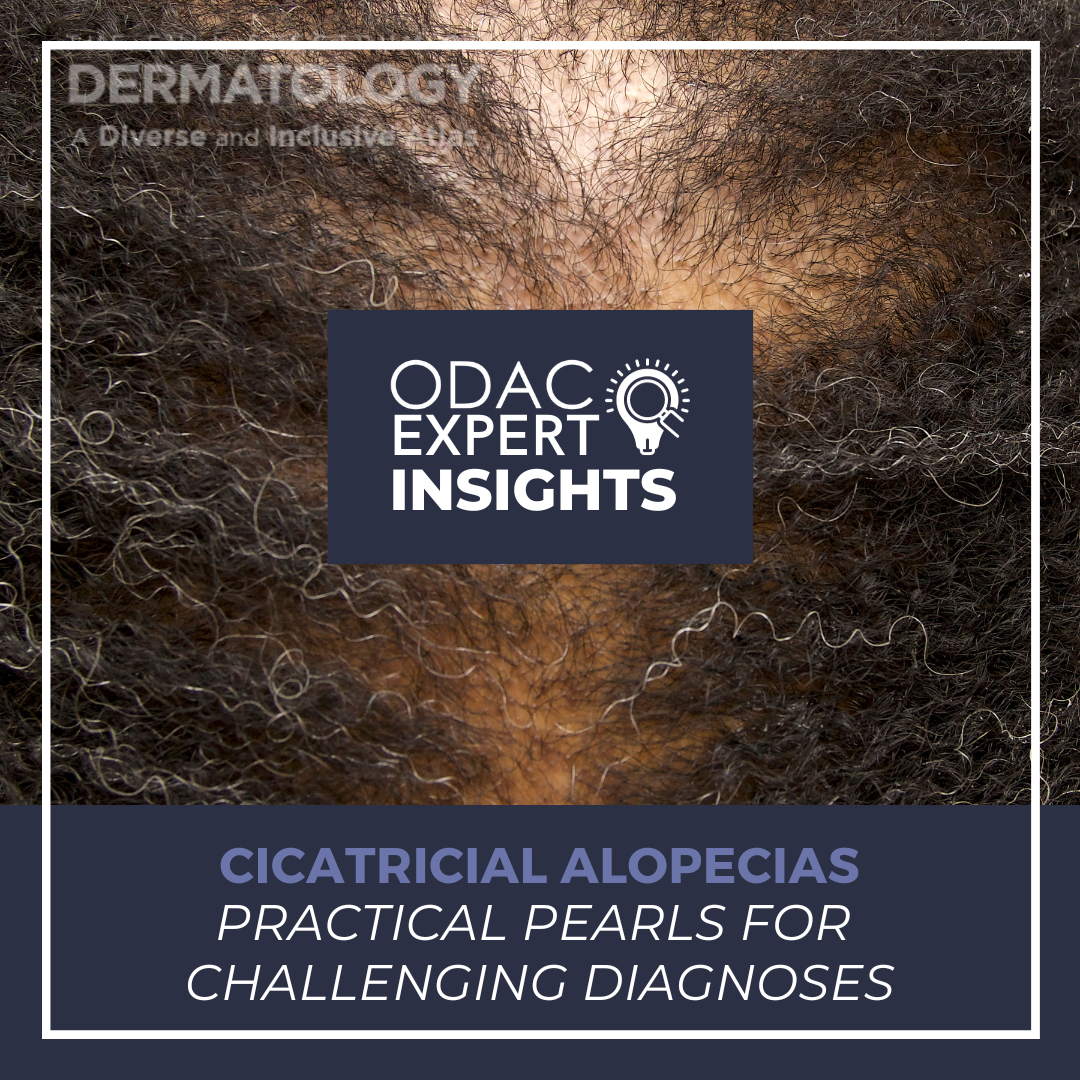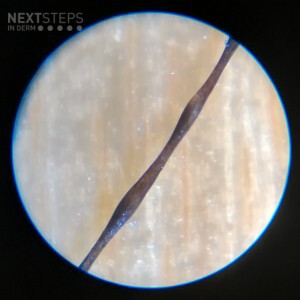Atypical Dyschromia in Skin of Color
 ABSTRACT
Dyschromia is a concern for many patients, especially persons of color. Postinflammatory hypopigmentation and depigmentation can affect all skin types; however, it is more apparent in those with darker skin. Some members of the dermatology community may not comprehensively understand the mechanisms of these reactions and the extent of the psychosocial effect they have on persons of color …
ABSTRACT
Dyschromia is a concern for many patients, especially persons of color. Postinflammatory hypopigmentation and depigmentation can affect all skin types; however, it is more apparent in those with darker skin. Some members of the dermatology community may not comprehensively understand the mechanisms of these reactions and the extent of the psychosocial effect they have on persons of color …
 ABSTRACT
Dyschromia is a concern for many patients, especially persons of color. Postinflammatory hypopigmentation and depigmentation can affect all skin types; however, it is more apparent in those with darker skin. Some members of the dermatology community may not comprehensively understand the mechanisms of these reactions and the extent of the psychosocial effect they have on persons of color …
ABSTRACT
Dyschromia is a concern for many patients, especially persons of color. Postinflammatory hypopigmentation and depigmentation can affect all skin types; however, it is more apparent in those with darker skin. Some members of the dermatology community may not comprehensively understand the mechanisms of these reactions and the extent of the psychosocial effect they have on persons of color … 

 Next Steps in Derm, in partnership with Skin of Color Update, interviewed dermatologist Dr. Victoria Barbosa, associate professor at University of Chicago Medicine. Watch as Dr. Barbosa shares why it may be challenging for an alopecia patient to visit a dermatologist and why it’s important to address the psychological burden of hair loss. Hear how considering a broad differential is essential t …
Next Steps in Derm, in partnership with Skin of Color Update, interviewed dermatologist Dr. Victoria Barbosa, associate professor at University of Chicago Medicine. Watch as Dr. Barbosa shares why it may be challenging for an alopecia patient to visit a dermatologist and why it’s important to address the psychological burden of hair loss. Hear how considering a broad differential is essential t …  At ODAC 2023, we had the opportunity to learn about cicatricial alopecias from renowned dermatologist and hair expert Dr. Amy McMichael, Professor of Dermatology at Wake Forest University School of Medicine.
First, we considered a framework to check for cicatricial alopecias. This is particularly important because if we can identify cicatricial alopecia, we can make sure we are treating the rig …
At ODAC 2023, we had the opportunity to learn about cicatricial alopecias from renowned dermatologist and hair expert Dr. Amy McMichael, Professor of Dermatology at Wake Forest University School of Medicine.
First, we considered a framework to check for cicatricial alopecias. This is particularly important because if we can identify cicatricial alopecia, we can make sure we are treating the rig …  Dr. Jerry Shapiro, or the “Lord of the Hair” (as described by ODAC conference co-chair Dr. Adam Friedman) provided us with an A to Z overview of frontal fibrosing alopecia (FFA) and lichen planopilaris (LPP) as well royalty-worthy pearls and treatment updates.
Before we start, here are my favorite quotes from Dr. Shapiro, which also serve as a great summary of his wonderful lecture:
“Fro …
Dr. Jerry Shapiro, or the “Lord of the Hair” (as described by ODAC conference co-chair Dr. Adam Friedman) provided us with an A to Z overview of frontal fibrosing alopecia (FFA) and lichen planopilaris (LPP) as well royalty-worthy pearls and treatment updates.
Before we start, here are my favorite quotes from Dr. Shapiro, which also serve as a great summary of his wonderful lecture:
“Fro …  What is the most likely diagnosis?
A. Bjornstad syndrome
B. Trichothiodystrophy
C. Uncombable hair syndrome
D. Monilethrix
E. Netherton's syndrome
To find out the correct answer and read the explanation, click here.
Brought to you by our brand partner Derm In-Review. A product of SanovaWorks.
…
What is the most likely diagnosis?
A. Bjornstad syndrome
B. Trichothiodystrophy
C. Uncombable hair syndrome
D. Monilethrix
E. Netherton's syndrome
To find out the correct answer and read the explanation, click here.
Brought to you by our brand partner Derm In-Review. A product of SanovaWorks.
…